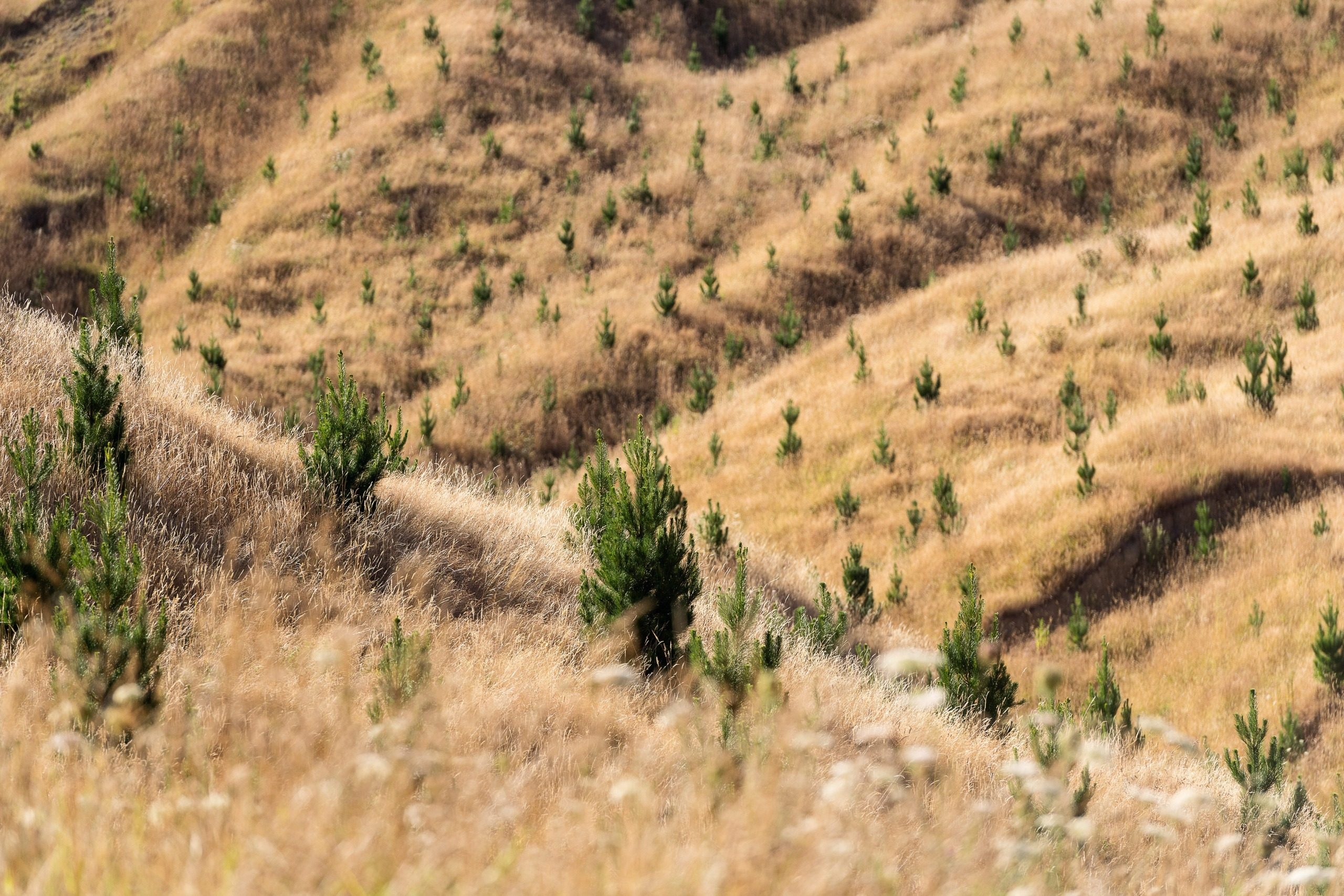Forestry fears fuel concerns
By Glenys Christian

Sheep and beef farmers’ increasing concerns about productive farmland being sold to be planted in trees for carbon credits have seen a number of recent initiatives putting the issue under the spotlight.
Back in July 2019 CountryWide ran an award-winning series on the effect farm sales to forestry were having on rural communities. It was estimated 68,000 fewer stock units were being carried and there were warnings that if the price of carbon, then about $25 a tonne shifted up to $35/t land use change would really start to happen. Last year’s (2021) early December auction under the New Zealand Emissions Trading Scheme (ETS) saw it hit a record $68/t.
In August 2019 a report commissioned by Beef + Lamb NZ from Baker Ag compared sheep and beef farming with forestry in the Wairoa district where in the previous two years almost 8500ha of pastoral land was sold into forestry.
Its modeling showed that while carbon farming forestry generated the highest net present value (NPV) to landowners it had the lowest and most irregular economic contribution. Sheep and beef farms’ spending was consistently higher and more jobs were created.
In August 2021 BakerAg was asked to update the land conversion information on a national scale, and found between the start of 2017 and the end of 2020 these land sales totalled 92,118ha.
It estimated 26,547ha, or 34%, of those sales were to carbon farming companies or forestry not intended to be harvested. Adding in a further 47,382ha of farmland approved for planting under the One Billion Trees programme or the Crown Forestry Joint Ventures scheme, 139,500ha was planted or will be in the near future
Nearly 90% of land sold into forestry was in land use classes ( LUC) 6 and 7, and 64% had a low to moderate erosion risk, making it highly productive sheep or beef country for breeding replacement stock. An estimated 700,000 sheep are likely to have been lost due to conversions.
Beef + Lamb NZ recently backed the formation of the Native Forest Coalition, noting a growing chorus of voices against unchecked carbon farming.
The coalition is made up of the Environmental Defence Society (EDS), Pure Advantage, the Rod Donald Trust, the Tindall Foundation, Project Crimson, Dame Anne Salmond and Dr Adam Forbes. Forbes was previously a research adviser to New Zealand Carbon Farming (NZCF) which owns or leases an estimated 90,000ha of former farmland planted in trees, but he now questions its long-term management plans and pest control.
The coalition is calling for changes to the ETS, more long-term thinking across Government policies to tackle climate change, and prioritising native afforestation over offshore projects.
Beef + Lamb NZ chief executive Sam McIvor said the Government needed to take a holistic approach across water, biodiversity and climate as well as sustainable food production.
The sheep and beef sector was committed to playing its part to meet international climate change commitments, through involvement in He Waka Eke Noa, linking the primary sector, the Government and Maori, and its championing the integration of forestry on farms.
“Without urgent action, the sale of sheep and beef farms into forestry will only accelerate as the carbon price increases,” he said.
In early December it joined a group of 14 local councils and Local Government New Zealand (LGNZ) to fund a report on exactly what was happening around the country. It was due to be released before Christmas with a February meeting planned to discuss its findings.
LGNZ wants the Government to find ways to incentivise planting of permanent indigenous forests, possibly with a carbon price differential between pine and native forestry.
Federated Farmers wants Government to remove policies it says are distorting rural land markets and wants an increase in funding for the Queen Elizabeth II (QEII) National Trust.
Minister for Primary Industries (MPI) Damien O’Connor was in MIQ isolation but a statement from his office said he supported the right tree in the right place.
He was aware of farmer concerns but said while forestry rates had increased the forest estate was still about 70,000ha smaller than it was in 2000. And 89% of land registered in the ETS was on land classes 6,7 and 8 which tended to run few stock per hectare and was more susceptible to erosion. The New Zealand Forest Service promoted the idea of mixed model farming/ forestry with farmers able to plant erosion-prone or less productive land in trees while keeping their prime farmland intact.
In early July 2020 Stuart Nash, who is now Minister of Forestry, promised that a legislation change to require resource consent for plantation or carbon forests on LUC 1-5 above 50ha a farm would take place within the first six months of Labour winning the election.
Opposition agriculture spokesperson, Barbara Kuriger said she was
very uncomfortable with good farmland being planted out in forestry, which if not managed well could end up as biomass. That would come at the cost of food production where overseas countries would take up any opportunities available.
She said it was important that decisions were made at a regional, local or catchment level as these were likely to have better outcomes.
National’s agriculture policy group was meeting in early December and policy would be formulated for release early in the new year.




